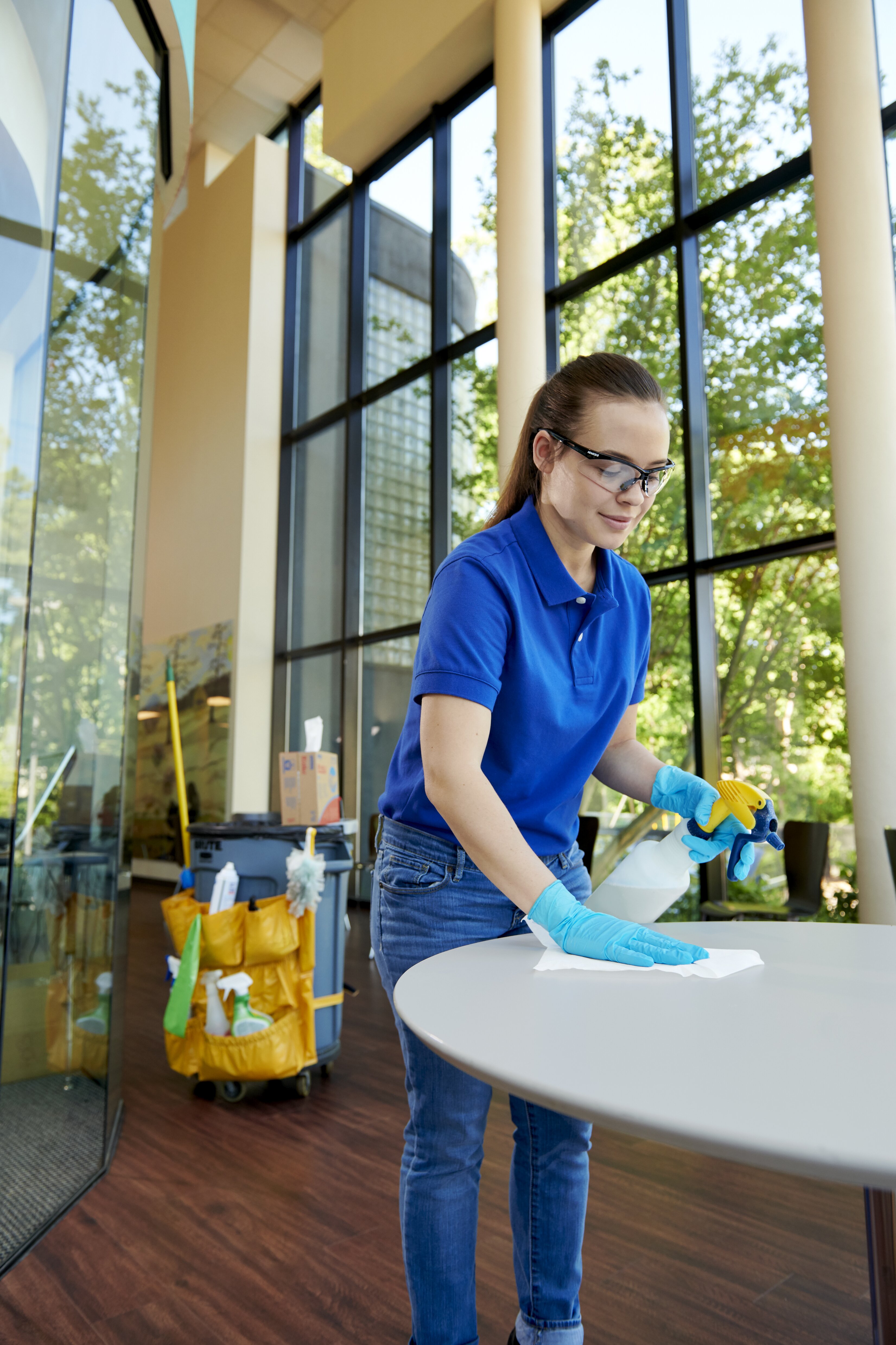Hygiene must not stop at the washroom, says Kimberly-Clark Professional
A new report from hygiene experts Kimberly-Clark Professional stresses the importance of cleaning and disinfecting all surfaces, including door handles and elevator buttons.
According to the report, the average desk has 400 times more bacteria than a toilet seat, while a keyboard harbours 8,900 bacteria and a mobile phone 6,300 bacteria. In healthcare facilities, 67% of soap buckets tested harboured bacteria, with 93% of cleaning towels sampled containing live bacteria.
With adults touching 7,200 surfaces and touching their face 552 times in the span of 24 hours, returning to hygienic premises post-lockdown will require tough hygiene protocols.
The advice from Kimberly-Clark Professional is that while placing hand sanitiser and signage in common areas is a step in the right direction, it simply is not enough to make a real impact.
“Objects that are touched by lots of people throughout the day, such as door handles and elevator buttons, should be cleaned and disinfected frequently in order to break the chain of germ transmission. Many of our customers are needing to think in a different way about what, how and how often they clean, to keep people safe,” said Steve Jones, general manager (UK and Ireland), Kimberly-Clark Professional.
“Understanding the difference between cleaning and disinfecting enables facilities to manage hygiene more effectively and prioritise frequently touched surfaces.”
Cleaning removes germs, dirt, and other impurities from surfaces or objects by using detergent (or soap and water) to physically remove germs from surfaces. This process does not necessarily kill germs, but by removing them, it lowers their numbers and the risk of spreading infection.
Disinfecting kills germs on surfaces or objects by using chemicals. This process does not necessarily clean dirty surfaces or remove germs, but by killing germs on a surface after cleaning, it can further lower the risk of spreading infection.
The Centre for Disease Control & Prevention (CDC) recommends a two-step daily routine to clean frequently touched surfaces. Step one involves cleaning surfaces with a detergent or soap and water, while step two follows up with the disinfection using an EN-registered disinfectant. The CDC guidelines also recommend providing disposable wipes so that commonly used surfaces can be wiped down before each use.
For more information visit the Kimberly-Clark Professional Healthy Workplace Cleaning guide

















